.

The Cadaver Synod of 897: Pope Stephen VI, aka Etienne VII, left, sitting in judgment upon the disinterred cadaver, clad in papal vestments and seated on a throne, of his predecessor, Pope Formosus, after the latter's damnatio memoriae (damnation in memory), by which all his acts and measures were annulled, all orders conferred by him were declared invalid, papal vestments were torn from his remains, three fingers of his right hand used in consecrations were sliced off, and his corpse was dumped in the Tiber (to be fished out later by a monk): Jean-Paul Laurens, 1870 (Musée de Beaux-Arts, Nantes)
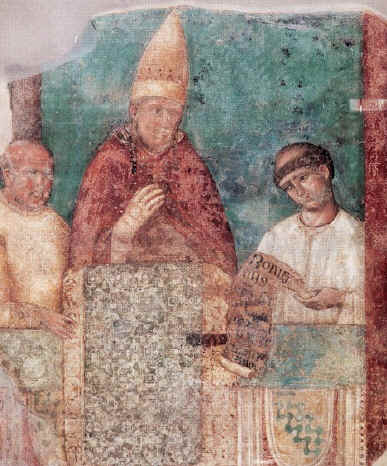
Pope Boniface VIII, portrayed by Dante in his Inferno as destined for the hell of the simoniacs though still alive at the fictional date of Dante's story; later referred to again in the same poem for his feud with the Colonnesi, which resulted in the demolition of the city of Palestrina, the murder of 6000 of its citizens and the destruction of both the home of Julius Caesar and a shrine of the Blessed Virgin Mary; here seen proclaiming the Jubilee of 1300: Giotto di Bondone, fresco in San Giovanni in Laterano, Rome, 14th c.

Pope Urban VI, aka Bartolomo Prignano, noted for his cruelty (he complained that he did not hear enough screaming when the cardinals who had conspired against him were tortured), here seen at left, shut up in the castle of Nocera, fulminating his anathemas against his besiegers with bell, book and candle: from the Croniche of Giovanni Sercanti, 16th c.
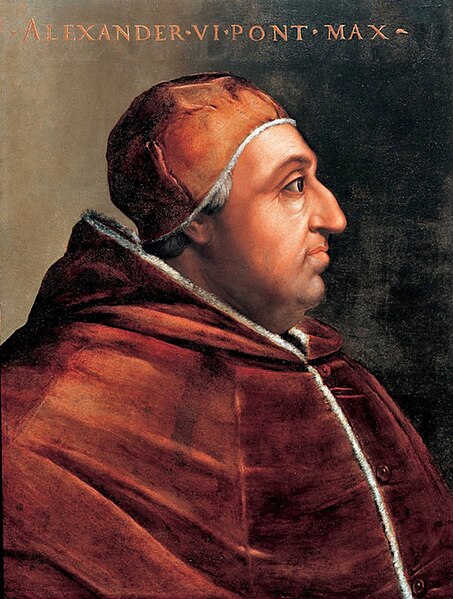
Pope Alexander VI, aka Rodrigo Borgia, who in three bulls of 1493 confirmed the Spanish monarchy's ownership of and entitlement to enslave the natives of the newly discovered lands of the Americas; a tyrannical pope who murdered and confiscated the property of any cardinal who resisted him, thus subjugating to the power of the house of Borgia the great rival houses of Orsini and Colonna; at his death, probably by poisoning, in 1503, his mouth foamed up like a kettle on the boil, his body emitted foul sulphurous gases from every orifice and became swollen to a width twice its length so that it could be jammed into a coffin only through force exerted by jumping upon the lid: Cristofano dell'Altissimo, 16th c.(Corridoio Vasariano, Florence)
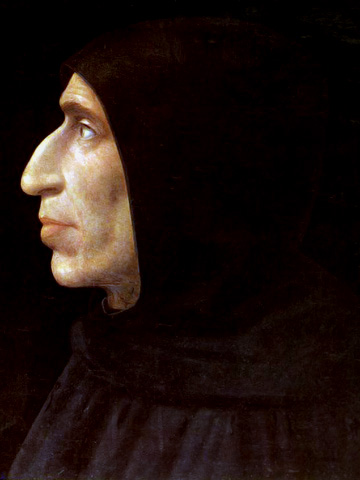
Girolamo Savonarola, arrested and executed in 1498 due to his invectives against the corrupt papacy of Alexander VI: Fra Bartolomeo, 1497 (Museo di San Marco, Florence)
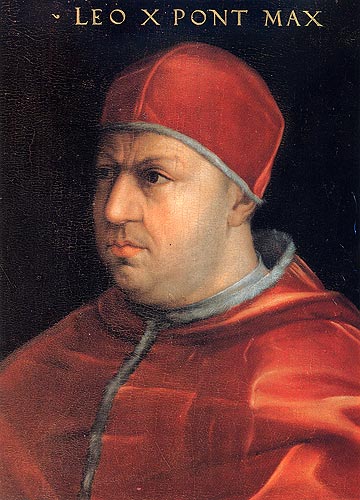
Pope Leo X, aka Giovanni di Lorenzo de' Medici, noted for his sale of indulgences to reconstruct St. Peter's Basilica; once lavished a seventh of his papal predecessors' total capital reserves on a single extravagant ceremony in Rome (detail): Raffaello Sanzio, 1518-1519 (Uffizi Gallery, Florence)

Pope Leo X, aka Giovanni di Lorenzo de' Medici, with his cousins the cardinals Giulio de' Medici (later to become Pope Clement VII) and Luigi de' Rossi: Raffaello Sanzio, 1518-1519 (Uffizi Gallery, Florence)
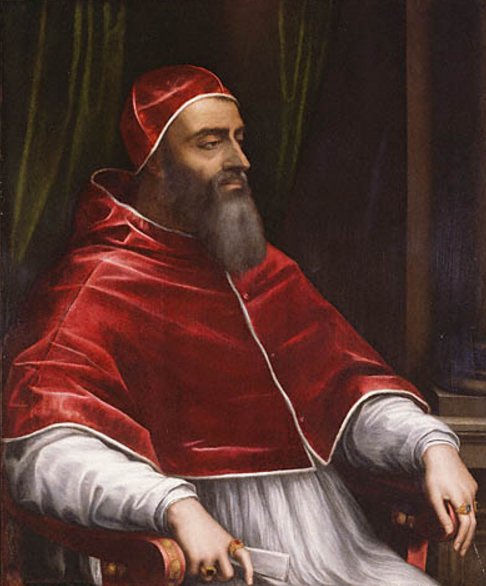
Pope Clement VII, aka Giulio di Giuliano de' Medici, whose political intriguing resulted in the sacking and pillaging of Rome in 1527: Sebastiano del Piombo, c. 1531
Historical information from E.R. Chamberlin: The Bad Popes, 1969